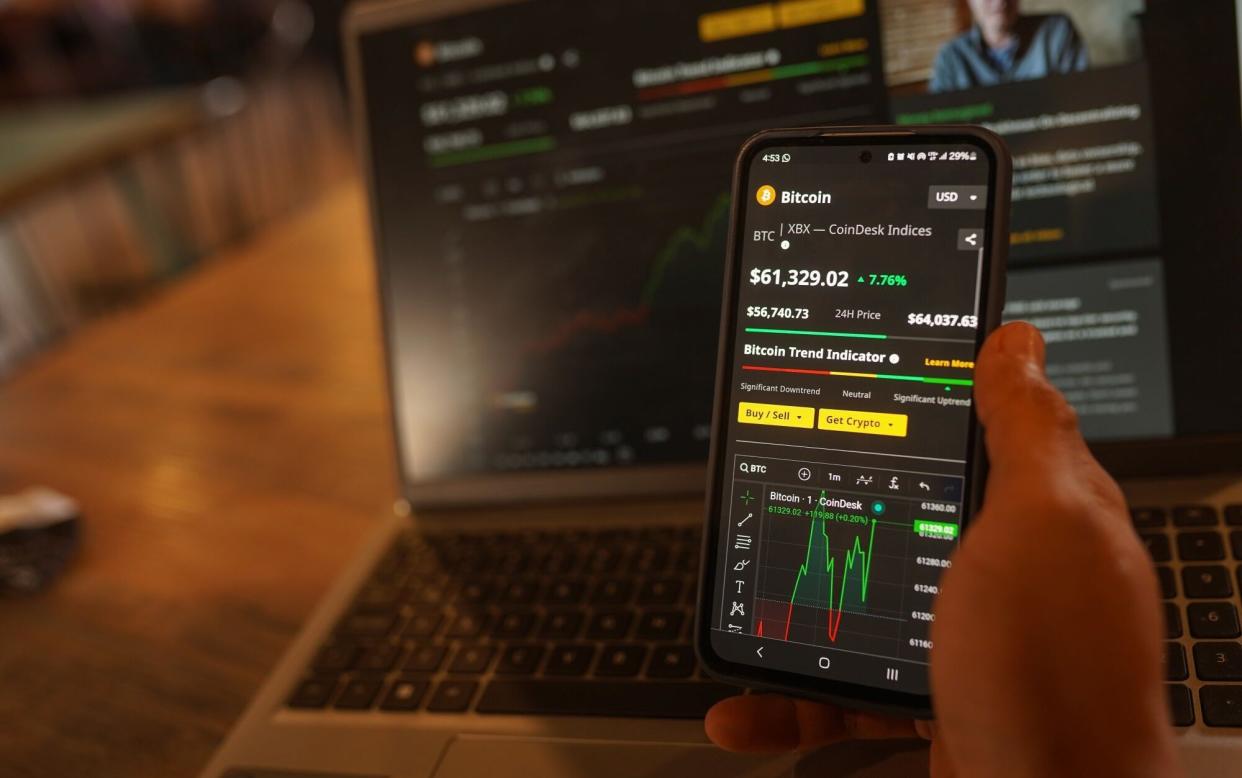I thought Bitcoin was going to be like tulip mania. I was wrong

When I first came across Bitcoin I thought it was going to be like tulip mania. How wrong I was. The price of one Bitcoin hit $50,000 (£39,670) on its way up on Valentine’s Day this year, and reached a new high of $73,000 on March 13.
In the past three years the Bitcoin price has risen as far as $73,000 and fallen as low as $16,000.
This latest rise is the third major rally in the past three years. But cryptocurrencies are one of the oddest innovations in finance, and also one of the hardest to understand.
They are also one where forecasts of their demise are, so far, premature.
Bitcoin, the largest and oldest cryptocurrency, has at the time of writing a market capitalisation (that is the total value of all the Bitcoins in existence) of around $1,200bn.
If Bitcoin were a company, it would be the eighth-largest company in the world; more than four times the size of the UK’s largest firm, AstraZeneca.
To be this large, logic would dictate that Bitcoin must provide valuable services to a large number of people.
Cryptocurrencies have emerged by an evolutionary process from a technological innovation called “distributed ledger technology” or “Blockchain”.
This is a mathematical system which allows the secure storage of information in a “no-trust and no intermediary” environment.
It means that you don’t have to trust anyone to still be able to have complete trust in information stored on the blockchain ledger.
To get to grips with blockchain technology requires recognising a concept called “proof of work”. The “work” required is often (but not always) the finding of a “password” in an almost uncrackable algorithm called a “hash”, and the process of finding the hash also updates and validates the blockchain.
The way these hashes are found is by what is known in the computer science world as “brute force”; essentially trial and error – trying every possible combination until the code is cracked.
Finders of the hash are rewarded by being given a unit (or partial or multiple) of the currency in question.
Bitcoin – the earliest and largest cryptocurrency by “market capitalisation” – requires brute force to crack, and the reward is Bitcoin. At the time of writing, a single Bitcoin is worth $67,000, so this reward can be very significant.
Bitcoin is an entirely digital monetary technology that could not exist without computers and the electricity to power them.
It also needs a large communication network to allow the consensus process to be conducted anywhere in the world by anyone with a computer.
The internet serves this purpose. Bitcoin’s origins are shrouded in mystery – a mystery probably designed to be perpetuated by the originator(s) – but dates back to early 2009.
Bitcoin “mining” in the early days (as the successful hash search process is called, mirroring the extraction of gold) was relatively computationally easy, so early Bitcoin miners did not have to expend too much computer time or power to mine each coin.

But Bitcoin’s design has limited the total number of “coins” that are in principle “mineable” to 21 million, and the difficulty required to mine increases over time, again mirroring the finite physical presence of gold on earth.
Early Bitcoin values were low – initially tiny fractions of a US dollar cent per coin, and this became an intellectual game for the large number of computer engineers and digital investors that were emerging in the new digital world.
It took about two years for the price of a coin to pass $1 on its way up. But since this was several hundred times the very earliest prices, the feedback loop this created on the online forums for early adopters started to spread.
It is worth noting that Bitcoin’s rise to prominence coincided with the advent of social media platforms which amplified the project.
The early players were largely “miners”, and once a market for Bitcoin developed, mining became for a while a relatively simple and very profitable enterprise. This activity rapidly increased the number of Bitcoins in circulation, and as the price rose, the concept began to seep into the general consciousness.
By the mid-2010s the price was moving so strongly upwards that a new breed of players emerged: speculative investments by the general public.
Their investments in Bitcoin and other cryptocurrencies (and the industry was spawning hundreds of copycat new coins mainly built on top of Ethereum – the second-largest cryptocurrency) were unregulated; they were private, and they appeared at least to look like something of a one-way bet.
The prices just went up and up. Until they didn’t of course. Several major price reversals, 2017-18, 2019, a couple in 2021 and 2022 shook out many poorly capitalised and/or naive investors.

In addition, several major frauds and failures in the market infrastructure have emerged, the most recent and largest being FTX, a crypto exchange founded in 2019 by Sam Bankman-Fried and Gary Wang. Bankman-Fried has just been convicted on multiple counts of fraud and sentenced to 25 years in prison.
But against many observers’ expectations, today a single Bitcoin costs $67,000 – four times its 2022-23 lows of about $16,000.
Why is this strange, digital construction of an alternative monetary system so resilient, and is this telling us something important? My view now is that Bitcoin’s – and other cryptocurrencies’ – appeal is their independence from regulatory interference and oversight of all kinds.
Undoubtedly, some of this appeal is to facilitate the activities of tax avoidance and criminality (just like bank notes).
But state interference in financial and monetary policy is not just resented by the criminal fraternity – it is also resented by many investors, traders and everyday people working and saving, who want to be able to conduct their affairs as they see fit, independent of the secular inflationary instincts of governments, misguided regulatory control and untrustworthy financial counterparties.
Gold investors have similar instincts. These advantages, it appears, are sufficiently embedded that cryptocurrencies have survived speculative bubbles and subsequent price crashes.
So Bitcoin and other cryptocurrencies are giving users the world over access to a non-inflationary, secure instrument which they can both hold and use to buy and sell goods and services.
For many individuals, particularly in repressive or inflationary regimes, cryptocurrencies are the only asset with these characteristics that is readily available to them.
There is much talk recently of governments developing and adopting digital currencies. But the very involvement of governments would negate the appeal of cryptocurrencies – the whole point is cryptocurrencies cannot be subverted, inflated, undermined, controlled or directly taxed.
I suspect that governments are concerned about the rise and survival of cryptocurrencies as they remove some of the monopoly monetary power that they can typically exert on their citizens.
Their rise also removes the transparency that facilitates taxation and regulation.
There has undoubtedly been a strong element of the “wild west” in cryptocurrencies so far, but my guess is that the financial establishment will start to tame them so that ordinary “non-techie” investors can buy and sell them with confidence.
The January 2024 approval by the SEC for the trading of spot Bitcoin Exchange Traded Funds (ETFs), and the EU’s February 2024 approval of the regulation of cryptocurrencies look like markers that this process has now begun.
Recommended
Gold at record high price: the best ways to invest and make a profit
